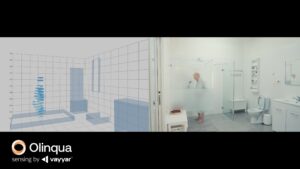In the healthcare industry, adopting new technology offers the potential for vast improvements – from better patient care to more streamlined operations and more accurate medical treatments.
However, with the sensitive nature of medical information, security risks must be taken seriously.
From pandemic surges to natural disasters, healthcare organisations have always needed to be prepared for the unexpected – to be on alert for the next attack, in whichever form it comes.
Now, those risks extend beyond the physical, to the technological.
Cyberattacks and data breaches have increased in hospitals and other healthcare settings since 2010, with this sector fast becoming one of the most frequently targeted by cyber attackers worldwide.
These threats only grow more coordinated and sophisticated as attackers become savvier and smarter in the ways they obtain sensitive information and adapt technologies for all the wrong reasons.
As cyberattacks continue to make headlines, organisations must think about ‘when’ they will be hit, not ‘if’.
According to a 2022 Cisco report, 96% of executives across industries consider cyber resilience to be highly important to their businesses, and nearly two-thirds of respondents said they experienced a security incident that affected their resilience, with a majority happening over the past two years.
This resilience is particularly important for the healthcare sector, which “must always be considering the unique cybersecurity challenges that come along with the ever-changing healthcare cyber threat landscape”.
For many professionals, these possible risks can seem daunting and overwhelming. Hospitals have enough to worry about without adding security threats to the mix! But not being equipped with the right tools and resources to minimise the impacts of these attacks can be a whole lot more overwhelming.
That is why at Olinqua, we are committed to working with our clients to understand their multifaceted needs, enabling us to better assist with overcoming security risks.
So, how does the healthcare industry overcome these increasing risks in order to minimise harm, keep things running as smoothly as possible, and recover and learn to avoid a repeat attack?
Examples of Security Risks and Attacks
Before we dive into how to overcome these risks, we’ll explore some of the many types of attacks that hospitals and other healthcare settings face when using existing, and adopting new technology.
Data Breaches
More and more hospitals are turning to Electronic Medical Records (EMRs). Digitising patient records makes them more accessible, useful, and less prone to human error.
However, as hospitals increasingly store and transmit patient information electronically, they may be vulnerable to cyber attacks that can result in the theft or loss of personal and medical information.
Network Vulnerabilities
Hospitals are interconnected and complex networks, with an extensive array of personnel, software, programs and data all trying to talk to each other daily.
These complicated networks, however, often make hospitals more vulnerable to hacking and other forms of intrusion if the right security is not in place.
In fact, it is often considered that a larger vendor footprint – more suppliers, more different devices and manufacturers – can increase the access points for an attack.
Insufficient Security Controls
With so many new solutions available, it’s easy to get caught up in all the ‘bells and whistles’ and forget about the perceived ‘boring’, but essential security features working in the background.
Hospitals may be using new technology without sufficient security controls in place, leaving them susceptible to cyber-attacks.
Lack of Staff Training
Like any industry, human resources are the most important asset of hospitals and other healthcare settings.
Human error and other human factors is also one of the greatest causes of security and data breaches.
Hospitals may not have enough trained staff to properly secure and maintain new technology, which can result in further vulnerabilities to data being hacked.
Regular updates to training should be carried out for all staff who have access to any system that holds personal information (or is connected to a system that holds personal information).
How do Hospitals Overcome these Risks?
It’s important for hospitals to be aware of these risks and implement actions to mitigate them, including updating security protocols, training staff, and regularly testing and updating their systems.
We have a number of tips for hospitals to overcome security risks when adopting new technology:
Quality IT as the Foundation
When you build a home, you focus on the foundations of the house – the concrete slab, the timber or metal framing, the insulation, the walls and the roof – and ensure these are of the highest quality. They provide you with a solid foundation to securely live in the house, knowing you are protected from the elements and as safe as possible from potential intruders.
The same can be said for IT in hospitals and other healthcare settings. IT that is of the highest quality is imperative to ensuring robust information security can do its job effectively. Implementing the right basics can ensure hospitals are minimising their risks from potential attackers.
Here at Olinqua, our dedicated team ensures our clients are equipped with the appropriate strategic implementation plan, training, and support – getting the foundations right first.
Despite the challenges many hospitals face now — including staff shortages, budgetary constraints, and a complex technology landscape – quality IT is undoubtedly essential.
Adhere to Regulations
There are strict regulations that healthcare organisations must comply with, such as ISO 27001, SOC 2 and IRAP that govern how medical information can be stored and shared.
Olinqua’s powerful technology meets these regulations and provides the necessary security controls to protect patient information. When implementing any new solution, experts should be included in the process to assess the system against these important requirements.
Secure Devices and Networks
With the increasing use of mobile devices (over 85% of physicians and nurses own a smartphone or tablet) and cloud computing in healthcare, it’s essential devices and networks are secured against cyber threats.
Secure messaging is one of the many offerings available at Olinqua – our dedicated module is a purpose-built solution for hospital staff to communicate efficiently (and securely) while on the go. Olinqua’s CTO David Paré explains that we built our messaging capability to “assist healthcare professionals in finding the right person, with the right role, currently working and available, yet safe and secure communication while on the go”.
Staff Training
As mentioned above, hospital staff are an important (if not the most important) asset to hospitals running smoothly and efficiently. The same can be said for them acting as the first line of defence against cyber attacks as they engage with new technologies.
It is essential that the staff are aware of the risks and are trained to identify and respond to security threats when and as they arise. It all starts with awareness.
As part of our support offerings, Olinqua provides training consultation through which our team consults with everyone who will use or be affected by the new solution to understand the best way to deliver onboarding for successful adoption.
Security risks should not prevent hospitals from embracing new technology. Instead, hospitals should confidently adopt and adapt knowing they have the right protocols in place and the support from expert providers like our team at Olinqua.
Find out how we can help your hospital today!



